The survival of a species can sometimes involve a great deal of luck, as I found out on a recent holiday to the island of Menorca.
Menorca (Minorca) is an island of around 30 miles by 10, lying off the east coast of Spain. It is a beautiful place, with clear seas, sandy beaches, and a lot of sunshine. It is also far quieter and less developed than its neighbouring island, the famous party island of Mallorca (Majorca). It turns out that there’s a good reason for this.
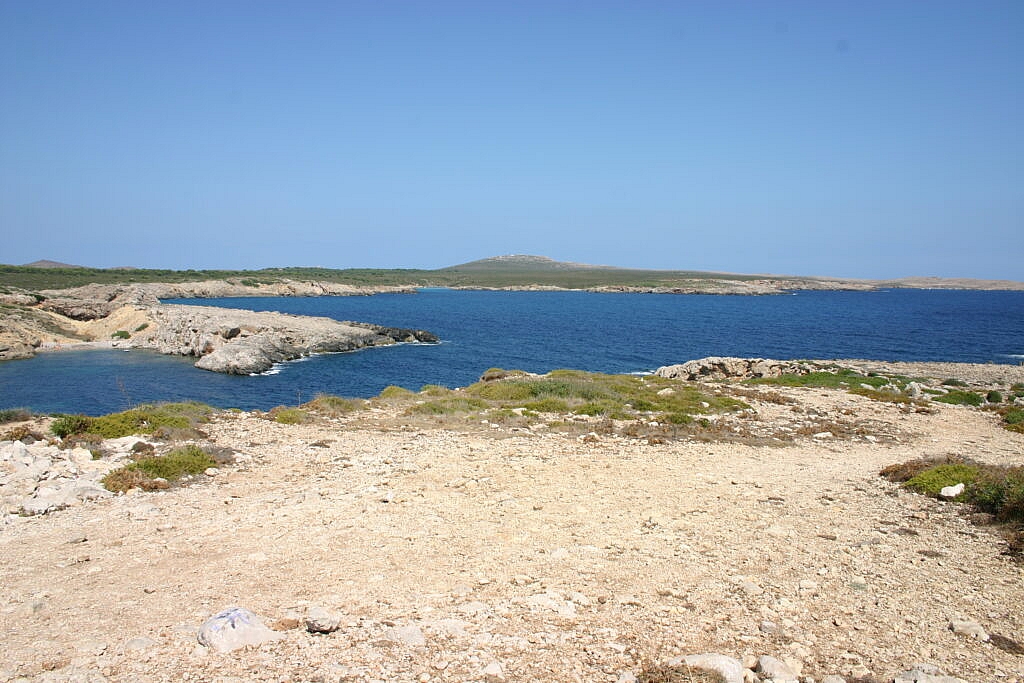
In the 1930s, Spain suffered a civil war, often described as a ‘dress rehearsal’ for the second world war. With the help of both Nazi Germany and fascist Italy, Spanish dictator General Franco overthrew the democratically-elected Government of Spain and seized power, which he held until his death in 1975. Mallorca supported General Franco in the war. Menorca, on the other hand, held out against Franco, and was the last Spanish territory to surrender to his dictatorship. This was something that Franco could neither forget, nor forgive. As Spain’s tourist industry slowly started to build in the post-war 1950s, Franco impoverished the small island, denying it the development funding it needed to take advantage of the growing market in package holidays. On Franco-supporting Mallorca, hotels and roads were built, and the tourist industry boomed. Menorca, by contrast, remained undeveloped, and life here remained simpler and quieter, much as it had been for centuries, with large areas of relatively untouched countryside.
That quieter, simpler life is extremely good news for those looking, as I was, for a peaceful holiday. It was also good news for an animal I’ve long wanted to see. While Minorca’s clean, sandy beaches were the main reason for my holiday there, I find it hard to sit still for very long, and after a few days, I set off to try, as you do on holiday, to find one of the world’s rarest reptiles. It survives in reasonable numbers on Menorca simply because Franco’s determination to punish the island mean that large areas of it were made into national parks before the hotel bulldozers could move in. The island is so untouched that it was designated a UNESCO Biosphere in 1993. My target was rare and hard to find, but at least it couldn’t run away too quickly. I was looking for the “Hermann’s tortoise“.
Now if you think of a tortoise, the Hermann’s is likely to be the one you’re thinking of, because it has been the staple of the pet trade for decades. Indeed, it is so wildly popular as a pet that today there are probably far more Hermann’s tortoises in captivity than there are in the wild (You can still buy captive-bred specimens today in the U.K., for around £160). The Hermann’s tortoise was once a fairly widespread species across the Mediterranean and beyond, due in no small part to the fact that it was (and in some places, still is) considered to be good eating. If you live in a landscape like Menorca, with bone-dry scrublands and open coniferous woodlands, any animal that can exe out a living in the parched summer vegetation with no support , yet still provide you with a tasty meal, is good news. Indeed, the tortoise was spread around the Mediterranean and beyond by sailors. Tortoises were regarded as a kind of shipboard fast food, a handy snack that came pre-packaged in its own cooking-pot shell, and it was common practice to release tortoises and other animals onto islands, so that they could breed and provide food for future voyages.
Sadly, the Hermann’s tortoise is now endangered in the wild. The total global population size isn’t known, as this is a small animal (a big female might be 22cm / 8in from front to back) which is only found in dense, wild scrubland. With each animal needing a territory of anything up to 7.4 hectares/ 18 acres to support itself, finding one is very much like looking for needle in a haystack. But we do know that numbers of the tortoise have been falling steadily, as a result of animals being taken from the wild for the pet trade and for food, and because of the destruction of the tortoise’s arid habitat. So I set off into Menorca’s 5,100-acre “S’albufera des Grau” wildlife reserve to look for one, much more in hope than expectation of actually doing so. A quick stop at the reserve’s information centre, and the challenge I was facing was confirmed. I was told that seeing a tortoise would be purely down to luck. There was no ‘good spot’ to try: I just had to wander the park’s paths and hope I stumbled across one. That advice was depressing enough, but even though it was mid-September and cold and rainy back in the UK, Menorca was still extremely hot, with daytime temperatures of 30C or more – just the way Hermann’s like it, but not the way I do. With the high humidity that small islands often have, I was soon dripping with sweat as I set off into the reserve’s thorny interior, following a little-used path.
Even when you don’t see a tortoise, Minorca’s wildlife is well worth taking time to see. Some of it was surprisingly familiar: I saw sparrows, pigeons and a flock of goldfinches. I could hear Cetti’s warblers, a small and elusive bird that in Britain normally hangs around need reedbeds and wet landscapes rather than thorn bushes and dry woodlands. Hummingbird hawk moths, which as their name suggests behave exactly like a hummingbird, are an occasional summer visitor to Britain , but here I was seeing them in large numbers. A common blue butterfly, the southern subspecies of our most common butterfly flickered past me. But then Minorca started to show its differences. Something skittered across the path in front of me and paused: a Moroccan rock lizard, about six inches/ 15 cm long, a common sight on Menorca along with other lizards and geckos.
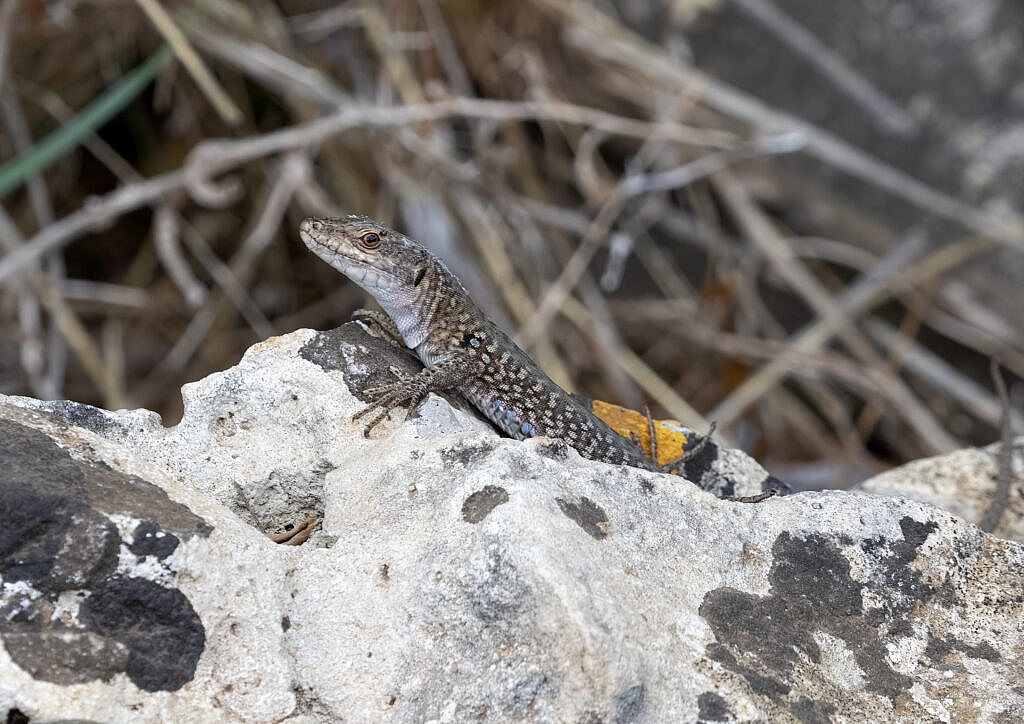
And then, after a couple of hours of walking, from the air above me I heard a raptor’s piercing call. Looking up I could see not one, but two eagles. They were booted eagles, which breeds on Menorca in small numbers. Although a true eagle, the booted eagle is far smaller than Britain’s eagles and is about the same size as a buzzard, with a wingspan of around 50 inches or 132 cm. The eagles had been flushed from a stand of trees by someone walking a dog, yet seemed strangely reluctant to leave the area, circling far overhead and calling. And that struck me as curious.
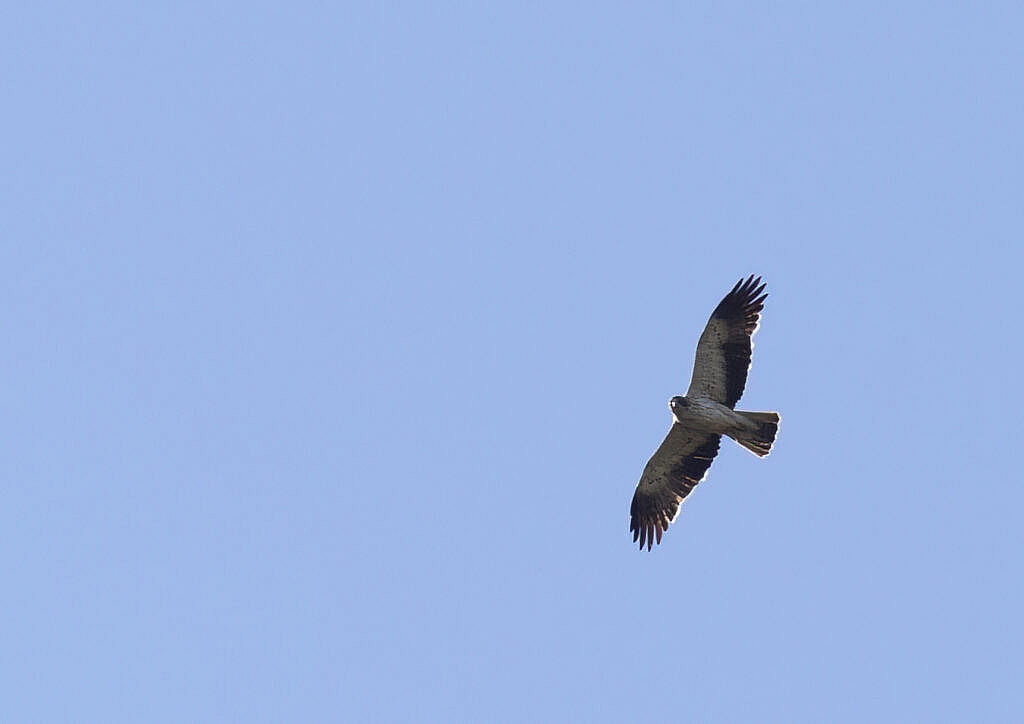
There’s not a lot of choice of things to eat in Menorcan scrub. The island has countless lizards and a few snakes, and a healthy population of rabbits. But I started to wonder if the eagles, with their keen eyesight, had spotted something… well, tortoise-y. So I walked towards where they were circling, crossing a patch of open ground to a hedge of torn bushes and brambles. As I approached it, I started to hear the slow crunching sound that I associate with small deer moving across dry leaves. Except that Menorca doesn’t have any deer. I rounded a clump of brambles, and there it was. A large Hermann’s tortoise, probably a female (It’s had to tell), moving into the shade of a bush.
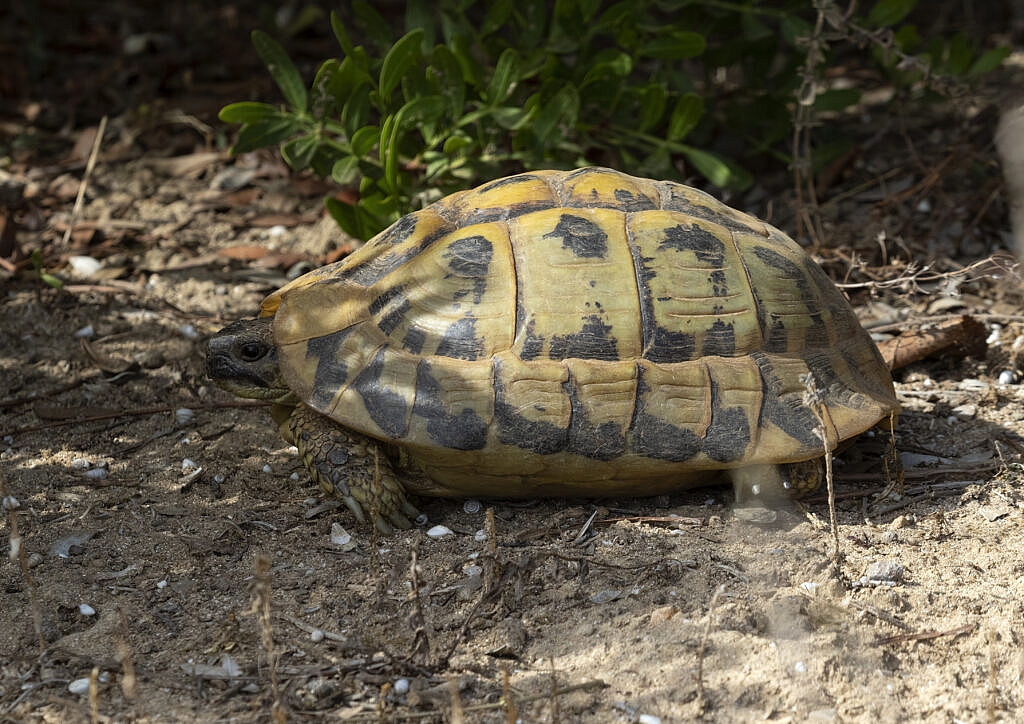
The tortoise spotted me and quickly withdrew into its shell. So I knelt and waited. And waited. The heat bore down, and I felt that I was slowly cooking. Any movement from me would spook the tortoise further, so I had to stay as still as I could. It took twenty agonising, baking minutes before the tortoise started to emerge again. It stuck its head out, then those scaly legs, and resumed its slow, plodding journey. Hermann’s tortoises can live up for up to 100 years, perhaps longer, if they are given the chance. It was sobering to think that the tortoise I was watching might have been alive when Franco was in charge, and might still be slowly plodding through Menorca’s scrub long after I’m gone. The fable of the hare and the tortoise, it seems, is not such a fairy story after all.

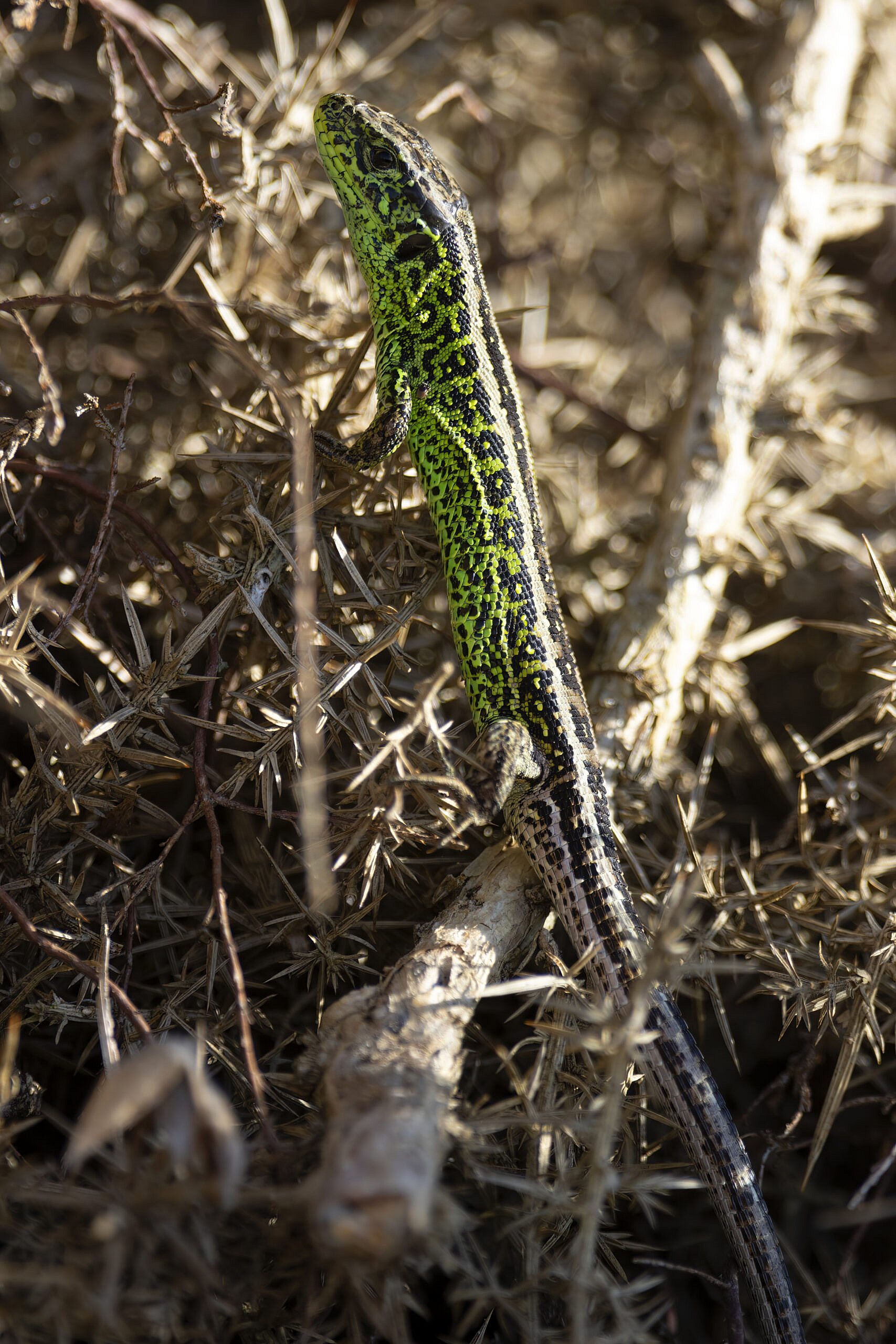
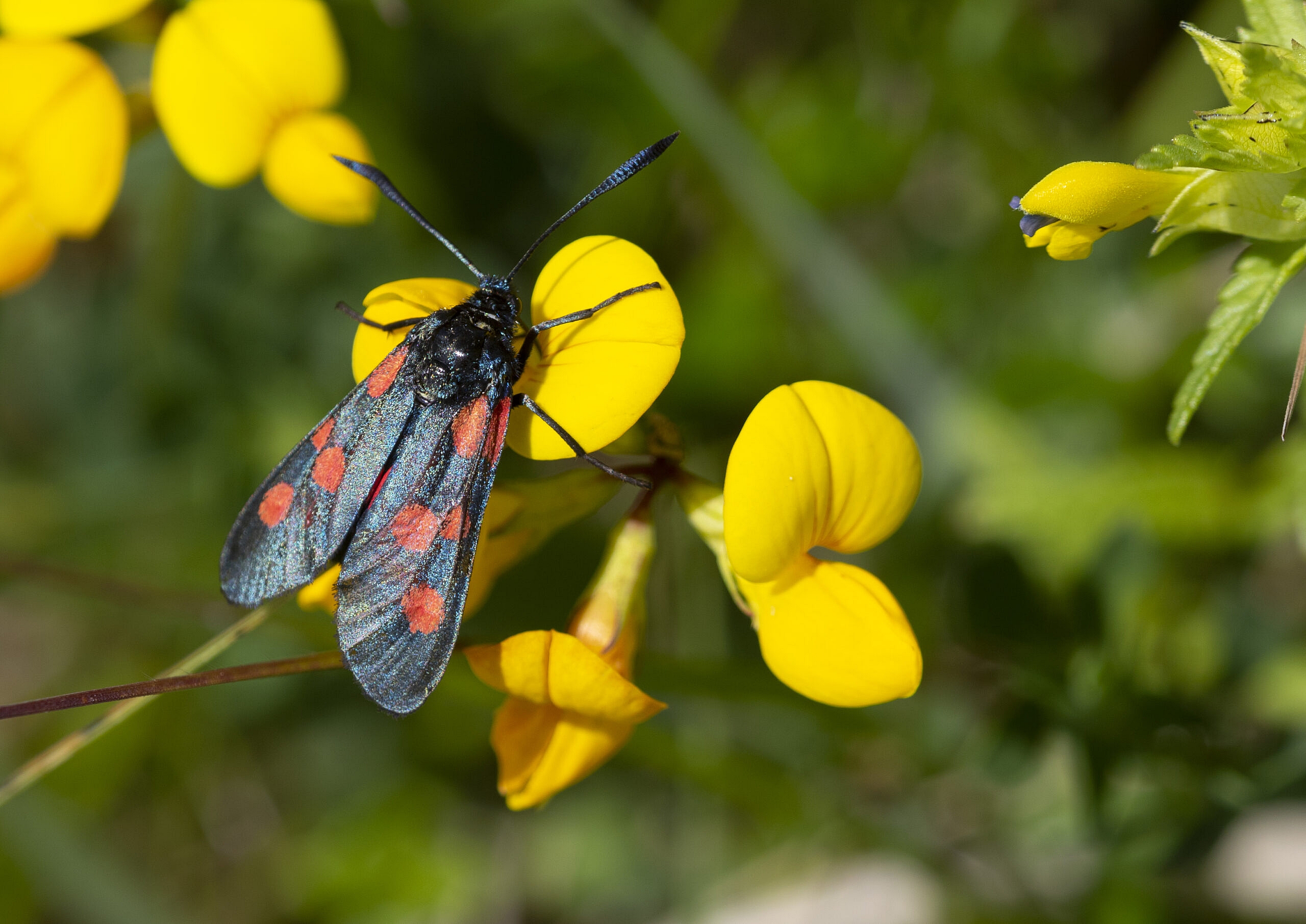
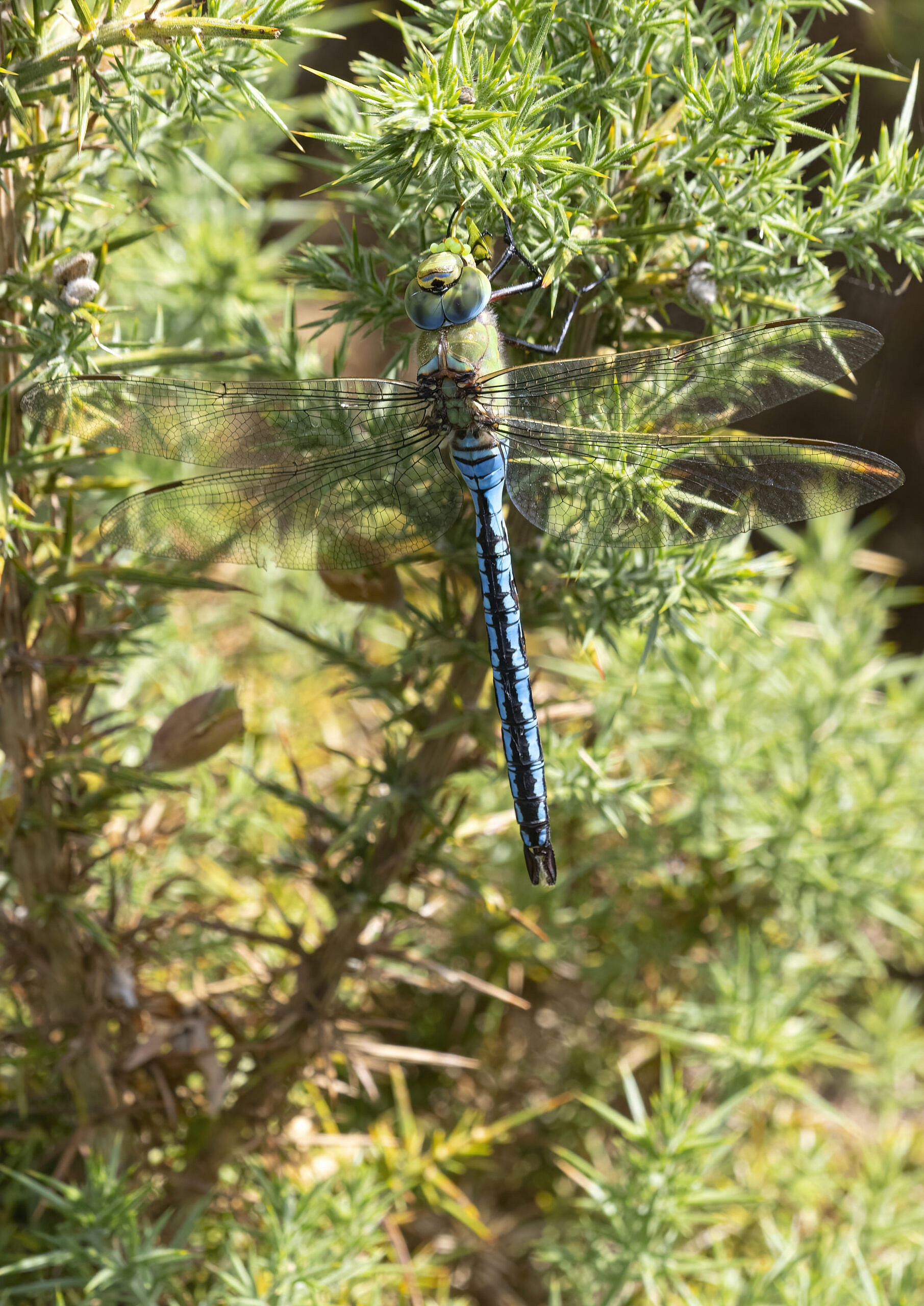

Social Profiles